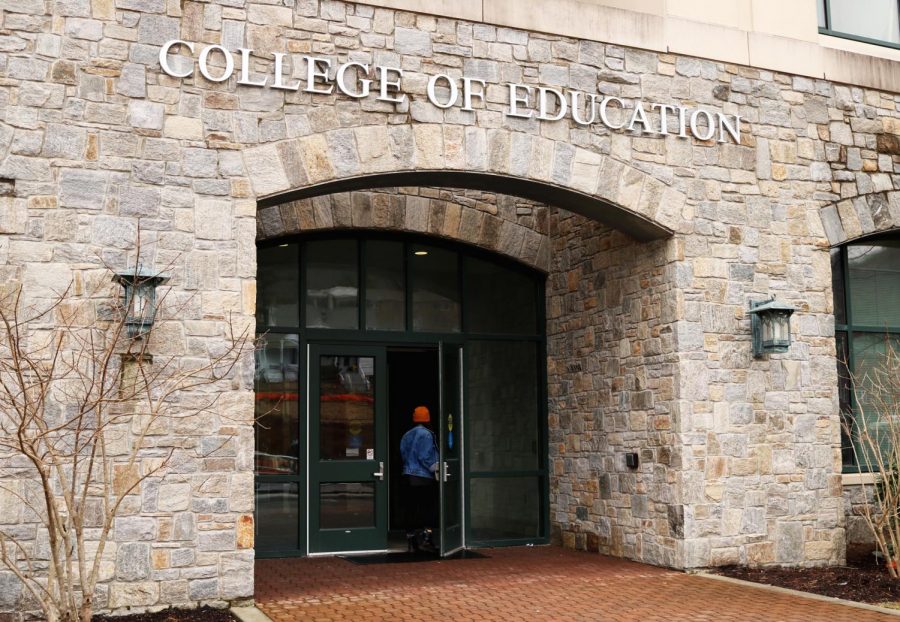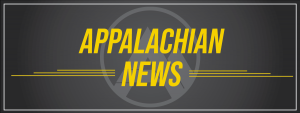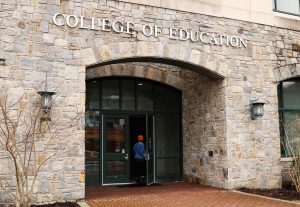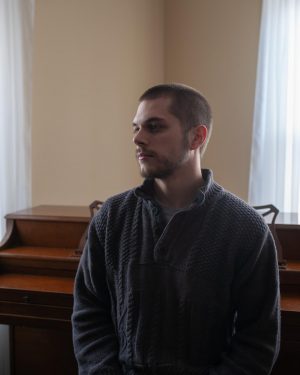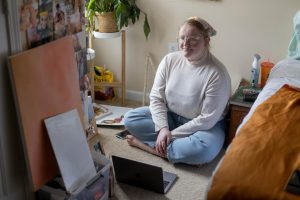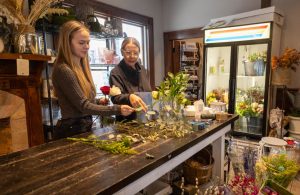Student teachers navigate finances, COVID-19 through spring months
Reich College of Education, where future student teachers take their classes. Student teaching has changed at the university, as future teachers now watch videos instead of interacting with children.
March 12, 2021
A student stands in front of a classroom. The eyes of other students, not much younger than her, stare back. When she finishes her 10-hour day, she’ll go home, sleep and repeat until the weekend when she’ll go to her second job to earn an income.
Student teaching is a rite of passage for the American education major. Typically in their last semester of college, future educators must first experience life in the classroom before entering the workforce.
“Student teaching was pretty much my life for those months,” said Nicole Moore, an App State alumna and teacher at St. Charles High School in Waldorf, Maryland.
As student teachers, education majors work in a classroom observing teachers and teach lessons toward the end of their experience.
Carman Crook, a math education major at App State, says this experience is not without its challenges.
Functioning as both a student and a teacher, Crook and her fellow student teachers pay full tuition, while also working a full-time job without payment.
“I personally cannot afford to not work at all, so I also will be working on the weekends,” Crook said. “So, it’s kind of like I’m working seven days a week between five days of student teaching and then working on the weekends just to help pay for gas.”
Crook started her student teaching experience in January. Anxious about the months without an income, Crook spent the summer and first semester of her senior year saving money to live on, but she said even that won’t be enough to support herself.
While enthusiastic to become a math teacher, the idea of the months ahead both excited and frustrated Crook.
“I’ve always thought about (student teaching) so that’s always been something I’ve been thinking about in the back of my head my entire college career,” Crook said.
While students like Crook will take second jobs to support themselves, some universities warn student teachers against the time restrictions of a job.
“Our university told us we really should not have any sort of side job during our student teaching semester,” said Kaitlin Luebchow, a Liberty University graduate and teacher at Flat Rock Middle School in Winston-Salem. “However, that did raise concern for many of my classmates because they were having to pay for college and rent while finishing the last semester of schooling.”
As students face the task of paying for college, working full time and balancing other jobs, they also face the challenge of doing so in a pandemic.
The pandemic affected how schools operate, forcing both teachers and student teachers to adapt to an unusual learning environment.
“From March to June, I was in survival mode,” Luebchow said. “We were given days to prepare for students to change from a completely face-to-face instruction model to a now entirely remote learning model.”
She said the sudden switch to an online learning environment took a toll on her emotionally.
Luebchow said her experience from March to May of 2020 was “very difficult” as an exceptional children resource teacher because she wasn’t able to show students concepts through remote instruction.
“My first thought was, ‘how am I going to make a difference in these students’ lives through a computer?’” she said.
The technology barrier also frustrated Jessie Dickson, a former student teacher at Edisto Primary School in Cordova, South Carolina, who opted to forgo a second job and live off her savings for a semester.
“It’s a lot of technology, so if your internet is down for the day, everything is frantic. You have to figure how to get to those kids that are at home, and it’s a lot,” Dickson said. “It’s a breeze now, but at first, it was like ‘what am I going to do?’”
Dickson said while as a student teacher, her school functioned on an A- and B-day schedule, with a group of eight students in the classroom on Mondays and Tuesdays and another group in person on Wednesdays and Thursdays. While one group was in person, the other group participated through Zoom, and the whole class Zoomed on Fridays.
Schools across the country followed similar schedules, splitting their days between in-person and online learning, leaving teachers and student teachers to change the way they traditionally taught. In North Carolina, this schedule is known as Plan B.
“It’s different because you can’t just focus on your kids in the classroom,” Dickson said. “You’re having to focus on your kids at home and in the classroom. At the same time, you’re having to teach all of them.”
Teachers expressed similar concerns about adjusting to a remote teaching environment.
“I didn’t like working from home and really struggled without the human interaction,” said Laura Merk, a sixth grade math teacher at Springfield Middle School in Fort Mill, South Carolina.
As teachers struggled to adjust, student teachers missed the experience of a face-to-face learning environment.
“COVID also means that I can’t physically meet any of my students, and while online, many of them do not speak up and do not have their cameras on, and it makes me sad. I really want to get to know all of them,” said Molly Joyce, a former student teacher at Walter M. Williams High School in Burlington, North Carolina.
Kat Edwards, an adapted special education junior at App State, said the lack of hands-on learning made her feel that she was not getting the education needed during the pandemic to succeed after school.
“I would say the biggest change has been the field experience where we are not working with actual children, but instead, we are reviewing videos from previous years,” Edwards said. “The most challenging aspect during the pandemic, I think a lot of it would be trying to learn, like what to do in a classroom when you can’t take the time to practice it.’
Coronavirus also ended student teaching experiences before many were ready. While some student teachers continued to teach, some transitioned online and others never saw their students again after March 2020.
“The relationships just ended. I never got to say bye to those students. I never got to thank them for letting me teach them at class as well as I would have liked to,” said Phil Watson, a former student teacher at Wilkes Central High School in Wilkesboro.
Despite the challenges, teachers and student educators have experienced positive outcomes through their experiences.
“I have been able to talk and encourage students struggling with home issues, friend issues and life in general,” Luebchow said.
The pandemic also allowed some student teachers, like Dickson, to save up for the financial strain of student teaching. Dickson said without her unemployment, there was no way she “could have made it,” and despite the financial challenges, she was grateful for her student teaching experience.
“The pay doesn’t matter, the drive doesn’t matter, just because you get to come every day and see those smiling faces,” Dickson said. “If you love what you do, you don’t work a day in your life.”

